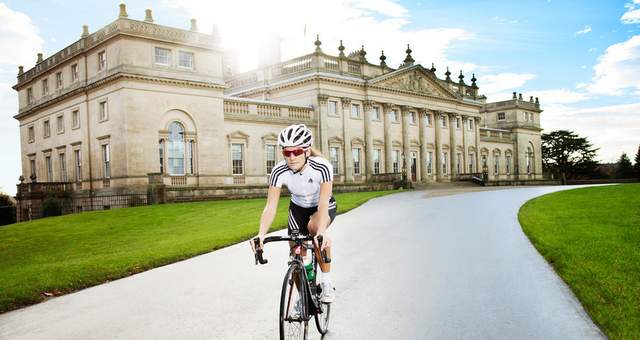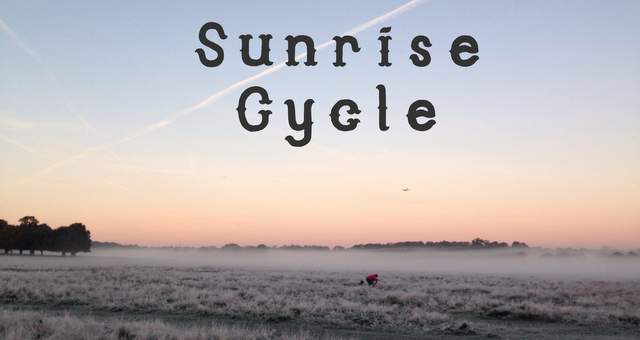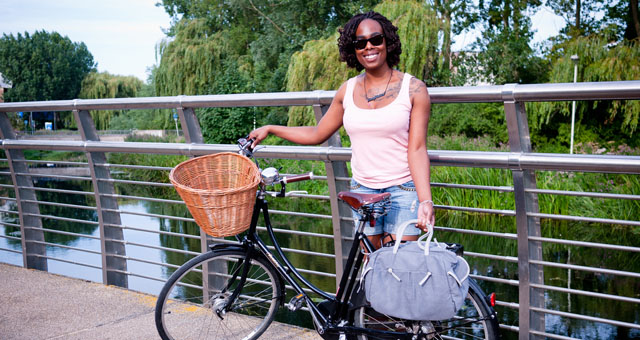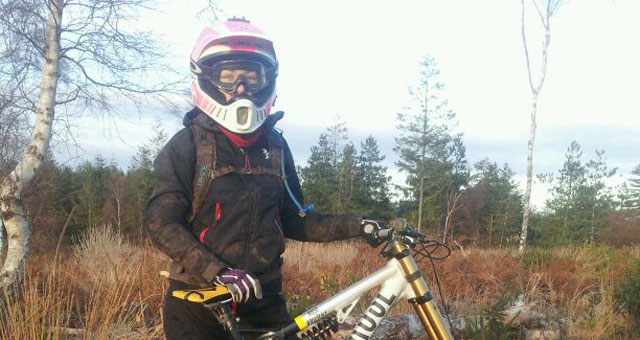For many, riding a sportive is out of their comfort zone; people often see it as something other than ‘ordinary’ riding.
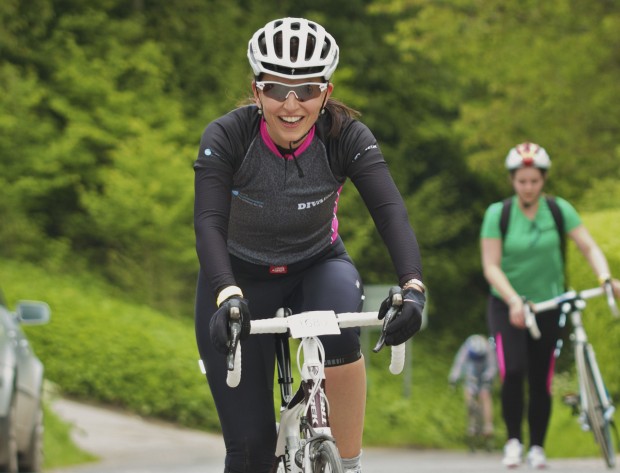
It could be to raise money for a charity that has special significance. It might be a challenge that you’ve set as a goal. It might be the first time that you have ridden that distance. Perhaps, it’s just a great opportunity to ride with other people.
Regardless of your reasons for entering a sportive, your preparation ahead of the ride doesn’t need to be much more involved than it would be for any ride, on any day.
Chris Garrison is here to allay your fears and offer lots of advice on the kit you need to successfully tackle a sportive.
Your ability to enjoy a sportive, and your normal rides for that matter, are heavily dependent on a few key things:
- Bike setup
- What you wear
- What you carry with you
1. YOUR BIKE
DO make sure that you have the right bike for the type of riding you do.
We see so many women, riding mountain bikes on road rides. It’s not that these bikes won’t get the job done; it’s just that they aren’t the best tools for the job. If you are riding on the road, or tarmac paths, then consider a more appropriate bike. Your whole cycling experience will be more enjoyable.
DO make sure that your bike has regular maintenance.
Just like a car, your bike needs to go in for service once in a while in order to make sure it functions properly. Generally, twice a year is a good standard. The best places to take your bike in for a service are independent bike retailers, rather than ‘big box’ stores that can also provide you with windscreen wipers and motor oil.
DO check your tyre pressure, and lube your chain at regular intervals between service.
In general, you should check your tyre pressure a couple of times a week, and lube your chain every other week, depending on weather.
DO understand the importance of having your saddle at the right height.
Another common sight is women cycling with their saddle much too low. It’s understandable that you would want to be confident that you can put a foot down if you need to, but riding with a saddle too low is bad for your anatomy, and can lead to injury. When your saddle is at the proper height, you shouldn’t be able to put a foot flat on the ground. If this is a concern you have, remember that you can stand on a pedal before you put a foot on the ground. You don’t have to stay seated.
DON’T ride a bike that is too big, or too small for you.
Bikes are like shoes: using the wrong size will be uncomfortable, and will take away from your ability to enjoy the sport. A good, independent bike retailer can help you figure out what size bike is right for you.
DO make sure your saddle is what your anatomy wants.
We see far too many people riding with gel pads over their saddle. These can actually be more uncomfortable than a saddle on its own. If you are uncomfortable when you ride, then the problem is with the saddle. The best thing to do is find one that fits. Everything you need to know about getting the right saddle for you can be found in our ‘saddle comfort equation’ article.
2. WHAT TO WEAR
Cycling attire exists for a reason. These are technical pieces of equipment designed with a purpose. While it’s perfectly acceptable to wear normal workout kit while bike riding, you should consider that for a longer distance ride, such as the Action Diva, or the Prudential Ride London, you’ll have a far better experience if you consider wearing proper riding kit.
DON’T wear yoga gear.
Freedom of movement might be a wonderful attribute of yoga pants and tops, but they are not designed for cycling use.
DO get a good pair of cycling shorts, with a quality chamois pad.
You can wear these under any other garment. Cycling shorts will protect you, and make you much more comfortable on your ride. Never wear underwear under your riding shorts. The chamois pad is designed to be against your skin, and if it isn’t, chaffing is a real possibility.
DON’T wear cotton against your skin.
Cycling kit is made from materials that are designed to wick moisture away from your skin, keeping you much more comfortable on the ride. Layering for riding is important, as well. Start with a wicking base layer, then add a cycling jersey on top. Add a jacket, if the weather requires it.
DO get a cycling helmet.
Cycling helmets are lightweight, and help keep you cool in warm weather. They are also designed to specific consumer safety standards. Make sure you get the right size for you, and know how to wear it properly on your head. Plus, the majority of sportives make it a requirement of entry that you wear a helmet on the day.
DO carry a packable waterproof.
There are a variety of good, waterproof jackets available on the market that pack down small enough to fit into a jersey pocket.
DO wear cycling shoes.
There is a big difference between cycling shoes, and trainers. Cycling shoes have very stiff soles, which protect your feet, and make it possible for more power to be transferred to the pedals. Trainers allow your foot to flex too much, which can lead to injury. You don’t have to use clipless pedals, the kind that are like ski bindings, but you will benefit from having a good pair of cycling shoes. They won’t cost a fortune, and they will make your ride more energy efficient.
3. WHAT TO CARRY
Another common thing we see women do is carry more ‘stuff’ than they need on a ride. It’s easy to feel like you want to be prepared for every eventuality when you cycle, but realistically, you can usually make do with a few key items.
DON’T carry more food and water than you need.
The general rule is that you should take in some calories every 30 minutes, and have a drink of water every 15 minutes (one water bottle per hour). You don’t need to consume an entire energy bar every half an hour, just a couple of bites. The idea is to keep your blood sugar at a constant level, rather than letting it peak and trough. Based on this, it isn’t necessary to carry a full roast dinner for a two-hour ride. Plus, on most sportives, there are rest stops with snacks, making it even easier to plan what you carry.
DON’T carry your entire wardrobe.
As mentioned earlier, layering for a bike ride will help you minimise what you need to take with you. A base layer and a jersey are standard, with the addition of a windbreaker or waterproof, preferably the sort that you can pack down into a pocket. Shorts or 3.4 length cycling shorts will get you through most variations in temperatures. Knowing what the weather conditions are going to be during the course of your ride will help you decide what to wear.
DON’T overload your bike with unnecessary items.
A saddlebag on your bike should be big enough to carry what you need to change a flat tyre, a multi-tool, and possibly room for a few bits and pieces. Things like wallets, keys, and phones can be carried in your jersey pocket. If you carry a lock on your bike, then consider leaving it at home when you are doing a sportive.
Similarly, if you have panniers on your bike, then after reading the above DON’Ts, you might be able to shed them. In essence, the more weight you have on the bike, the more energy required to ride the distance.
DO make sure you have the right spares to fix a flat tyre on your bike.
Not all bike tyres are the same size. Even if you don’t know how to change a puncture yourself (a vital skill that you should learn), make sure you have the necessary spares for your bike. Someone who knows how to fix a flat for you might not have the same tyre size. In essence, make sure you have spare inner tubes that match the ones currently on your bike!
If you’re looking for a sportive to aim towards in 2014, look out for our guides over the coming weeks.


